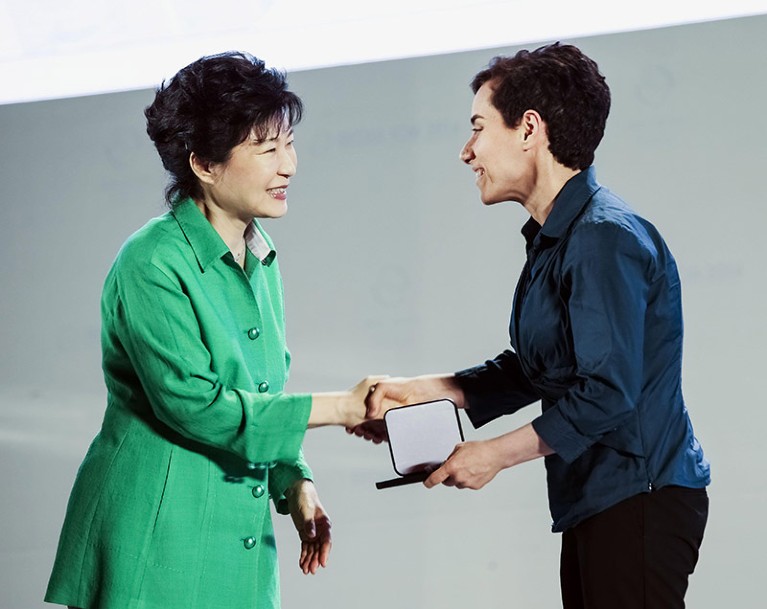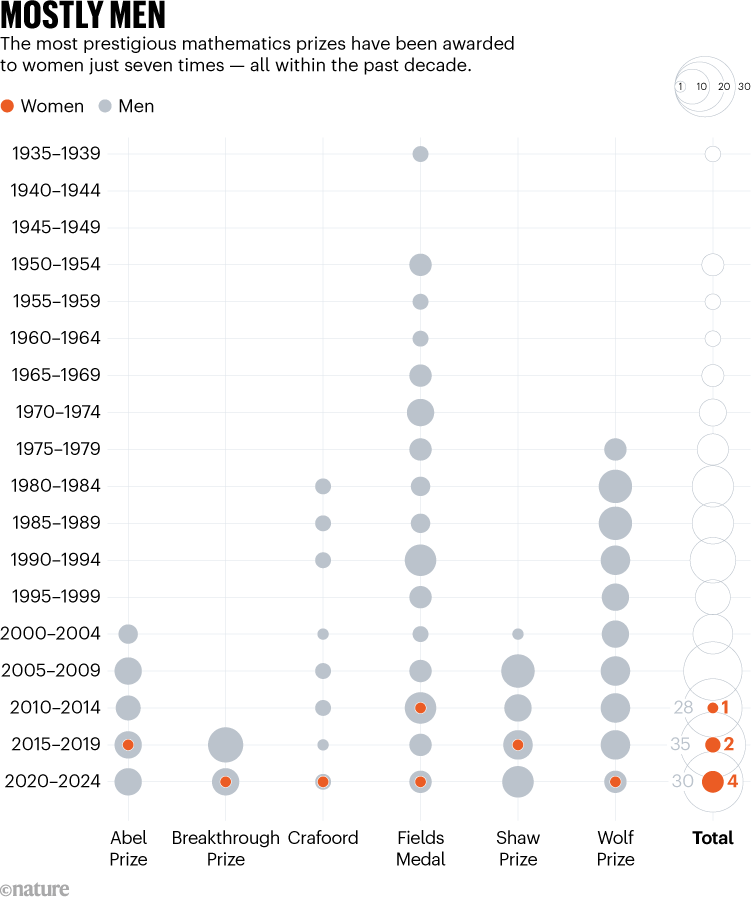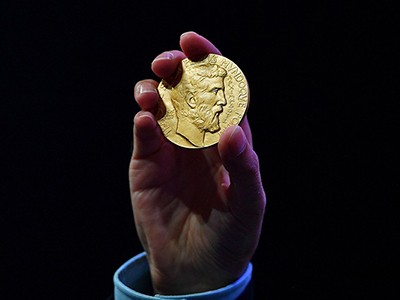
Maryam Mirzakhani, who died in 2017, was the first woman to win a Fields Medal.Credit: Lee Young-ho/Sipa USA via Alamy
On 30 January, mathematician Claire Voisin became the first woman to win the 2024 Crafoord Prize in Mathematics — one of the pre-eminent awards in the discipline.
The win highlights an ongoing issue in mathematics: a lack of gender diversity among the winners of the field’s most prestigious awards. Voisin is one of just five women to have won a top maths prize in the past 90 years — all within the past decade.
“Awards are one mechanism by which work and thinkers are promoted in the broader community,” says Kathryn Leonard, a mathematician at Occidental College in Los Angeles, California, and former president of the Association for Women in Mathematics (AMS), based in Providence, Rhode Island. “If women and people from other excluded groups continue to be excluded, their work is not being celebrated and shared.”

Six of the world’s top maths honours — the Fields Medal and the Abel, Shaw, Wolf, Crafoord and Breakthrough Prizes — have been awarded a total of 217 times, but only seven times to women. Two women — Voisin and Maryam Mirzakhani — have claimed two of those awards each. Voisin shared the Shaw Prize in 2017; Mirzakhani won the Fields Medal in 2014, and was posthumously awarded the Breakthrough Prize in 2020, mainly for her theoretical work in understanding the symmetry of curved surfaces.
In 2023, physicist and mathematician Ingrid Daubechies, best known for using wavelets in image compression, received the Wolf Prize. Karen Keskulla Uhlenbeck secured the Abel Prize in 2019 for her pioneering efforts in modern geometric analysis, and number theorist Maryna Viazovska won the Fields Medal in 2022.
Gender gap
Table of Contents
“The situation has improved tremendously during my professional lifetime,” Leonard acknowledges. But she adds that, in an ideal world, award winners should represent the community they are part of.

Mathematics prizes have a gender problem — can it be fixed?
It is difficult to gauge how many women earn mathematics degrees each year, or to assess female representation in mathematics professions worldwide. The International Mathematical Union, a global body that promotes cooperation in maths, has member organizations in more than 80 countries, and does not keep statistics on its member demographics. According to the AMS’s 2018 survey, women account for between 25% and 30% of mathematics PhDs in the United States.
“While there has been increasing awareness about the gender gap and important progress in recent years, some aspects remain unchanged,” says Carolina Araujo, chair of the IMU’s Committee for Women in Mathematics. “Statistics show that, while there has been a steady increase of the proportion of women authors of scientific papers in mathematics in the last decades, the proportion of women authors in ‘top journals’ in mathematics remains below 10%.”
Ways to close this gender gap include actively promoting the visibility of female researchers and diversifying committees that make awarding decisions, Araujo adds. Another way, which might help people who take career breaks to care for children, would be to add 18 months per child to age limits where these apply to awards, she says.
